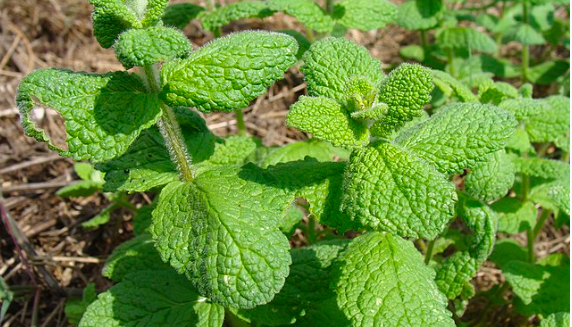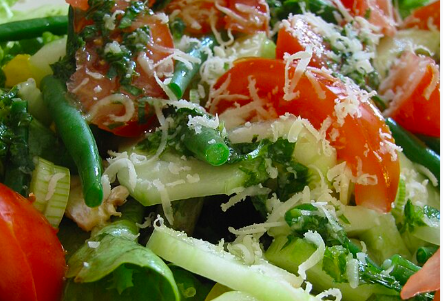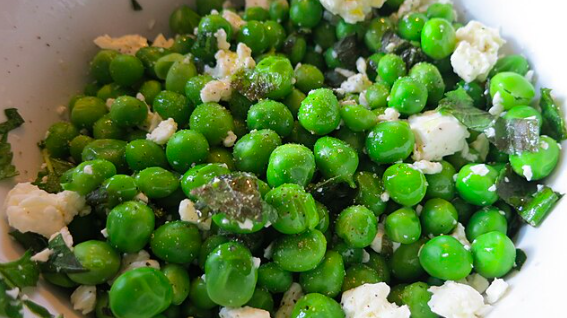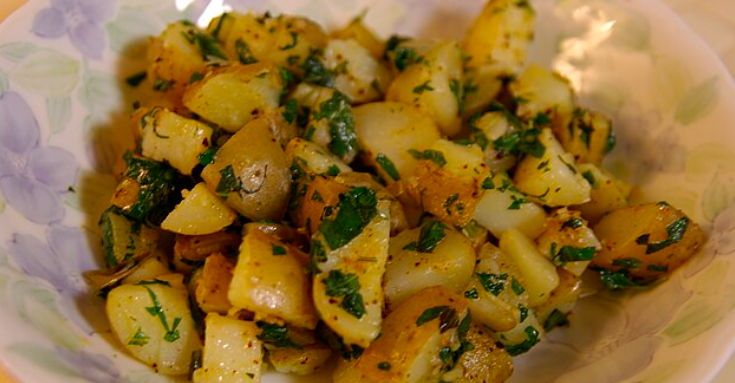Mint - One of the Most Popular Garden Herbs
By: Habeeb Salloum/Arab America Contributing Writer

Cultivated since the dawn of history in the Middle East and the Far East, this pungent herb has always been highly valued for its refreshing scent and pleasant taste. In the Medieval Ages, its aromatic volatile oil, menthol, which all types of mint contain, made it ideal to strew around kitchens and sickrooms to freshen the air. Nevertheless, through the centuries, it has been, above all, renowned for its use in the culinary arts and medicine.
In the ancient and medieval worlds, mint was employed to repress the curdling of milk in women’s breasts, to stop bad breath, hiccoughing and vomiting, as an aid to child bearing and digestion; and as a relief for difficult menstruation, sore gums, stomach disorders and gonorrhea.
Modern research has established that most of the ancient uses of mint in the medical field have a firm base. Today, mint is utilized to give medicine a pleasant taste and for it’s anti-flatulent, anti-spasmodic, carminative and stimulant attributes. It has been found that it helps in removing nausea, relieves diarrhea and stimulates the menstrual flow, and a few drops of mint oil mixed with water help to alleviate the common cold or flu, colic in babies, insomnia and head or toothaches.
Oil extracted from the leaves, is used to flavour alcoholic and soft drinks, chewing gums, confections, cosmetics, detergents, soaps and toothpastes. Yet in spite of all it’s medical and other attributes, mint’s main use is for culinary purposes.
In the Middle East and North Africa, mint leaves are utilized in every course of the meal, from appetizers to desserts and drinks, especially tea. In addition, mint is often utilized to give a tang to a wide variety of yogurt and stuffed vegetable dishes. Mint goes well with beans, burghal (cooked crushed wheat), carrots, eggplants, lentils, peas, potatoes and tomatoes. They add much to the taste of fruit salads and jellies, salads; and all types of vegetarian salads, sauces and soups.
The leaves are at their epitome of flavour when picked fresh. If wrapped with a damp towel and placed in a refrigerator, they will keep for about a week. The leaves can be dried, but they lose some of their flavour and aroma. 1 teaspoon of dried, finely crushed mint leaves may be substituted for 4 tablespoons of fresh mint. Last, but not least, mint is one of the great decorating herbs.
The following dishes are a small sample of how mint spices up food and gives it an enticing aroma.
Tomato-Mint Salad

Serves 4 to 6
4 medium tomatoes, quartered, then thinly sliced
1 small onion halved, then thinly sliced
4 tablespoons chopped fresh mint
1 large clove garlic, crushed
3 tablespoons olive oil
3 tablespoons vinegar
1/2 teaspoon salt
1/4 teaspoon pepper
Place tomatoes and onion in a salad bowl and set aside.
In another bowl, thoroughly combine remaining ingredients then stir into the tomatoes and onion mixture just before serving.
Tomato-Sesame Salad – Salatat Tahini

Serves 6 to 8
3 tablespoons tahini
1/4 cup lemon juice
3 cloves garlic, crushed
1/2 teaspoon salt
1/4 teaspoon pepper
pinch of cayenne
5 medium sized tomatoes, diced into 1/2-inch cubes
1 medium sized cucumber, finely diced
1/2 cup finely chopped parsley
1 tablespoon finely chopped fresh mint
In a serving bowl, thoroughly combine the tahini, lemon juice, garlic, salt, pepper and cayenne, then add the tomatoes, cucumber and parsley and toss. Garnish with the fresh mint just before serving.
Minted Peas

Serves 4 as a side dish
2 cups fresh or frozen peas
2 tablespoons finely chopped fresh mint
2 tablespoons olive oil
1/2 teaspoon salt
1/4 teaspoon pepper
Place peas in a saucepan then barely cover with water. Bring to boil, then cover and cook over medium heat for 10 minutes. Stir in remaining ingredients then serve.
Minted Potatoes

Serves 4 to 6
cooking oil
2 lbs. peeled potatoes, diced into 1/2-inch cubes
1/2 cup finely chopped fresh mint
4 tablespoons vinegar
1 teaspoon salt
1/2 teaspoon pepper
Place oil to about 1 inch deep in a frying pan, then heat. Sauté potato cubes over medium heat until they turn light brown, stirring a number of times, then remove with a slotted spoon and place in a serving platter. Combine remaining ingredients then stir into potato cubes just before serving.
Honey-minted Peaches
Serves 4 to 6
This tasty dessert can be made by substituting a variety of fruits like apricots or mangos for the peaches.
5 tablespoons honey
5 tablespoons lemon juice
1 tablespoon chopped fresh mint leaves
3 cups sliced peaches
a few extra fresh mint leaves
Place honey, lemon juice and mint in a saucepan then bring to boil. Strain then set aside for syrup to cool.
Place peaches in a serving bowl then stir in syrup. Garnish with mint leaves and serve.


